Peter Gut “sketches real life”!
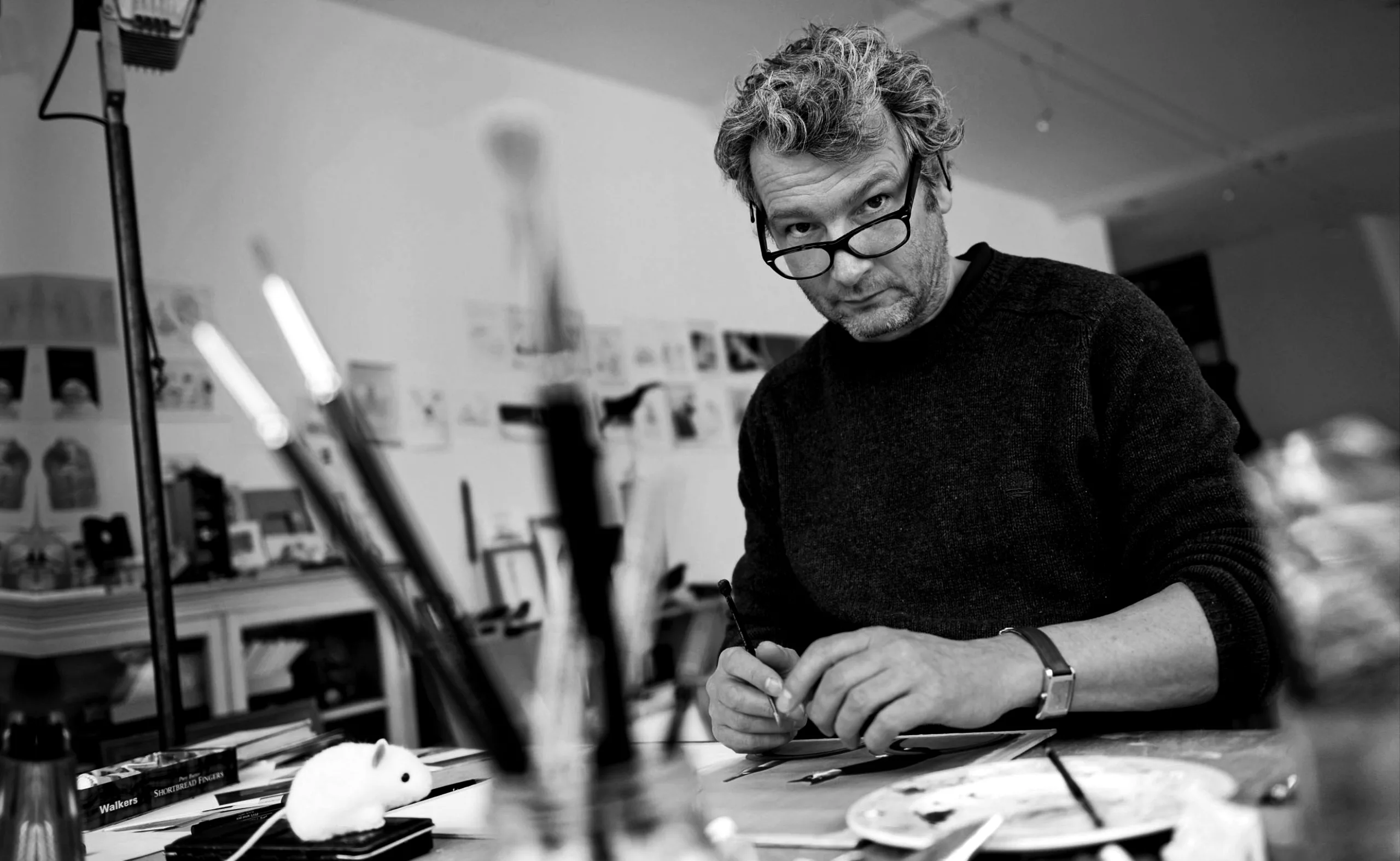
To continue our series of great names in graphic design, we make a small twist slightly out of the field of pure graphic design, by presenting a cartoonist / illustrator / press cartoonist Swiss German.
Peter Gut (1959 -)
Born in Winterthur (Switzerland), Peter Gut (born in 1959) enjoys international recognition as one of the most renowned and renowned Swiss and German designers. The first complete retrospective of the artist recently took place at the Cartoon Museum in Basel. This exhibition presented his caricatures and comic strips published by “NZZ“, “Bilanz” and “Die Zeit” as well as his extremely varied oeuvre ranging from illustration to comic painting and free drawing.
Peter Gut has the art of bringing together two major cartoonist’s qualités: he is an alert and hard-hitting commentator at même as well as a cartoonist précis and virtuoso. Solidarity as a transversal value, he likes to mix events, political and societal personalities to create explosive cocktails and surrealist situations, never leaving the viewer’s eye unscathed. And when his line is not immediately corrosive, it is because his humour and poetry must be carefully infused in order to perceive its full depth.
His technical palette is very varied (drawing, sketching, engravings, paintings, watercolours…) and his line is invariably virtuosic.
Here are some pictures of the exhibition and his work. The texts are taken from the press kit of the exhibition.



The headhunter
At the fateful moment when Peter Gut condemns his characters on paper, he shows us them complacent, far from any reflection and thus close to innocence. Imprisoned by the present, they sometimes even seem out of their time. As a master of introspection, Peter Gut realizes what few know how to do: represent the character traits of a person through his external appearance. Without hurting, it peels back the character of individuals. Gut’s portraits seem mostly numb or exhausted – from the tiring journey to the flat of the leaf.
“Crunchy life” is translated here by an “overflow of oneself”. Indeed, Gut forces his characters to submit to his line, with all that surrounds them and what they convey of their time. His style is similar to their expression. Even if they are often alone and endowed with few attributes, Gut’s stroke can bring them to light and give them body and dimension thanks to an elastic pencil stroke often thick. Between the designer and his model prevail a minimal distance and the necessary distance to the real person at the same time. He modifies the distance between the drawing and the observer by the radiation, attraction or repulsion of his characters. the eye, the hand and the heart are one at Peter Gut’s. Her translation of reality is nourished by the heart, it is natural and declares humour as part of normality.
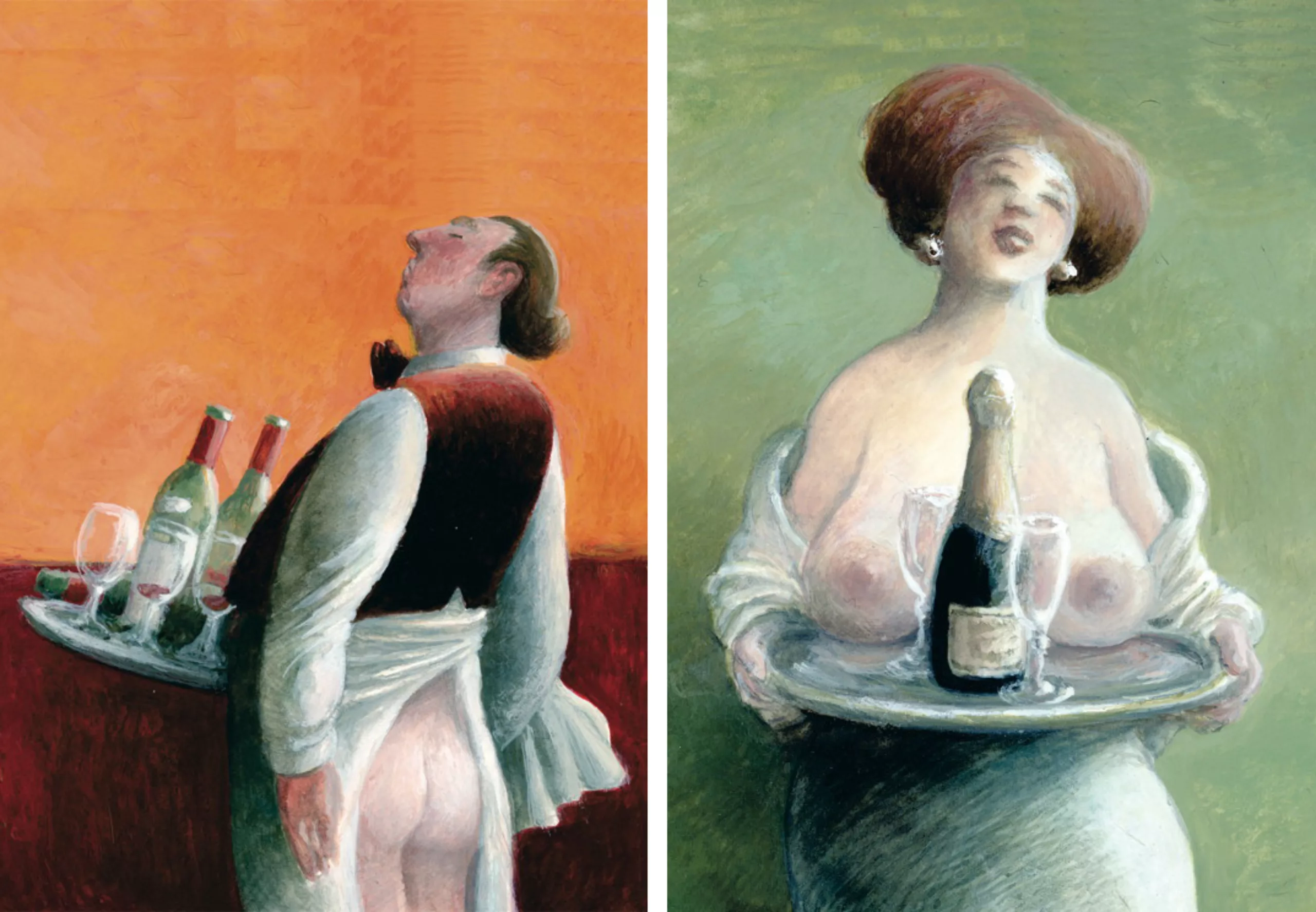


From the lightest to the most serious
Peter Gut’s open-mindedness, and perhaps also her self-taught path, have led her to explore and use several artistic styles and techniques in parallel. Apart from his caricatures, he creates illustrations, usually on the comic register, no longer referring to known people and situations, he then takes a freer look at everyday life, society and culture. Each drawing will always open a deeper field of questioning than it seems at first glance. From the subtle evocation to the raw joke, from more poetic creations to heavier gags, his work allows us to explore all the nuances of laughter, from the lightest to the most serious.
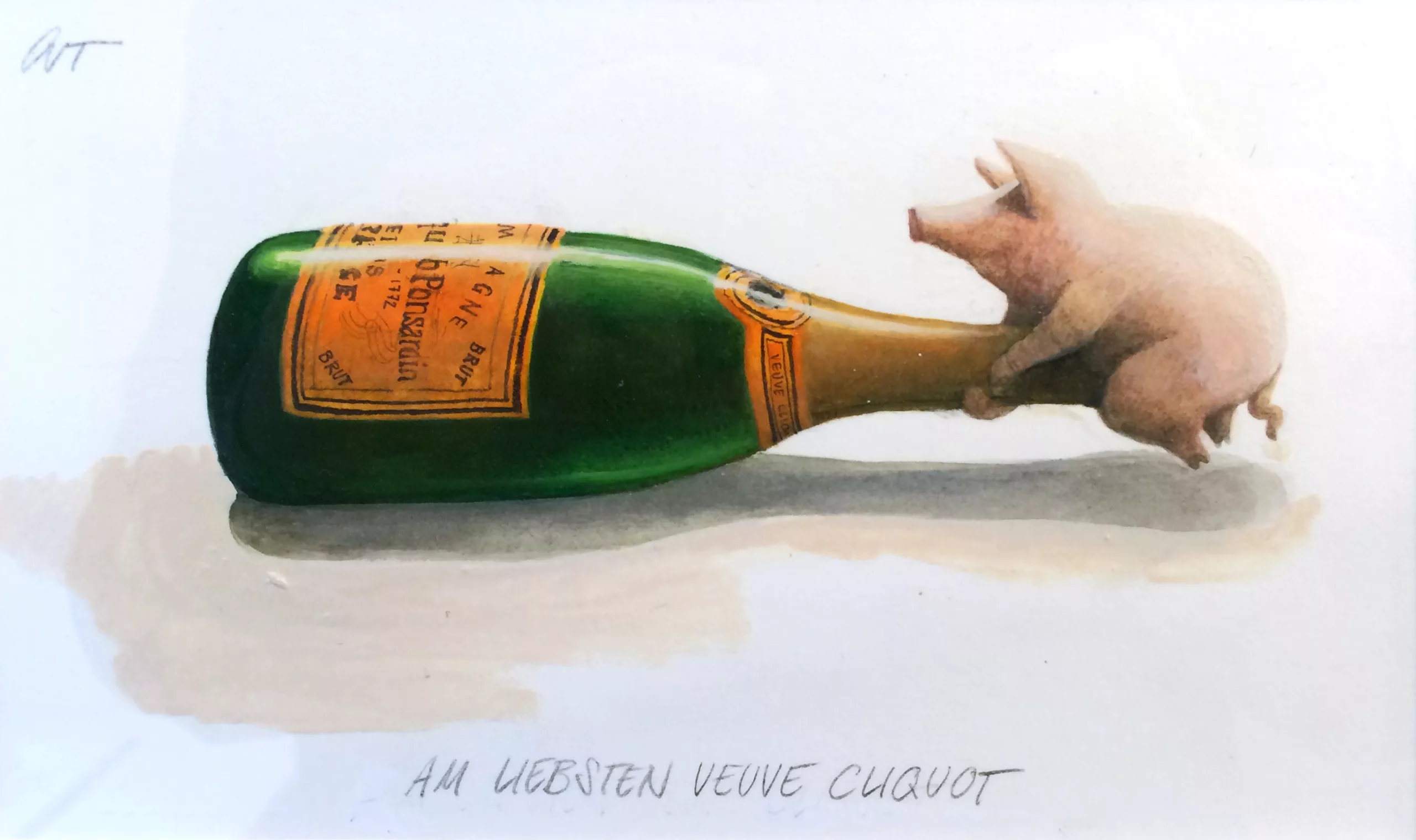
Fantastic animals
Animals and animal fables have always been used to give substance to social criticism comments. In antiquity, Ësope (Aesop) already used the otherness and expressiveness of animals to characterize the complexity of human conflicts and to present a mirror to society. Like La Fontaine, who preferred irony to lessons, Peter Gut’s animal comedy stories do not rely on morality and are based only indirectly on social criticism. Armed with his playful humour, his childish fantasy and a rich palette of colours, he challenges the world of humans by drawing from complex pictorial means. His animals are rarely chimeras, we rather identify them as talented actors evolving in our own roles. They know the advantages of their animal species and often use the technology of our daily lives when they enjoy their free time. It is with complacency, but sometimes without success, that native or exotic animals appropriate our daily environment and show the ecstasies that escape us when we devote ourselves too seriously to our animal obligations. Unlike portrait caricature, where Gut mocks people in their social context, he raises his animals to become masters of everyday life in comic painting. To do this, he not only needs know-how, he also has a good dose of comic spirit. If the observer is called elsewhere to feel empathy for the motive, he remains at a distance here, surprised, even repentant.















Le crayon libéré
Peter Gut’s erotic drawings are a feast for the eyes. His chubby women’s silhouettes feed on slender, tangible contours and are virtually free of hatching. Shadows and light are practically ignored. A long search precedes the sketched and light line drawings. Peter Gut makes countless preparatory drawings until he finds the perfect composition. Subtle touches of watercolour and shades of grey brighten it up. Peter Gut’s erotic drawings thus highlight his talent for abstracting characters and adorning them with an almost palpable vitality associated with emotional intensity at the same time. These images celebrate the right and unique line, while evoking the vigorous and sure line of Tomi Ungerer, another great designer and admirer of the female anatomy. However, the eroticism of Peter Gut’s caricatures is not only due to his very feminine silhouettes, but also to the enigmatic associations evoked by the women depicted and the objects that add a touch of fine and sensual humour to the situations. Produced without taking into account the editorial lines or visual habits of newspaper readers, these works are both free and personal.





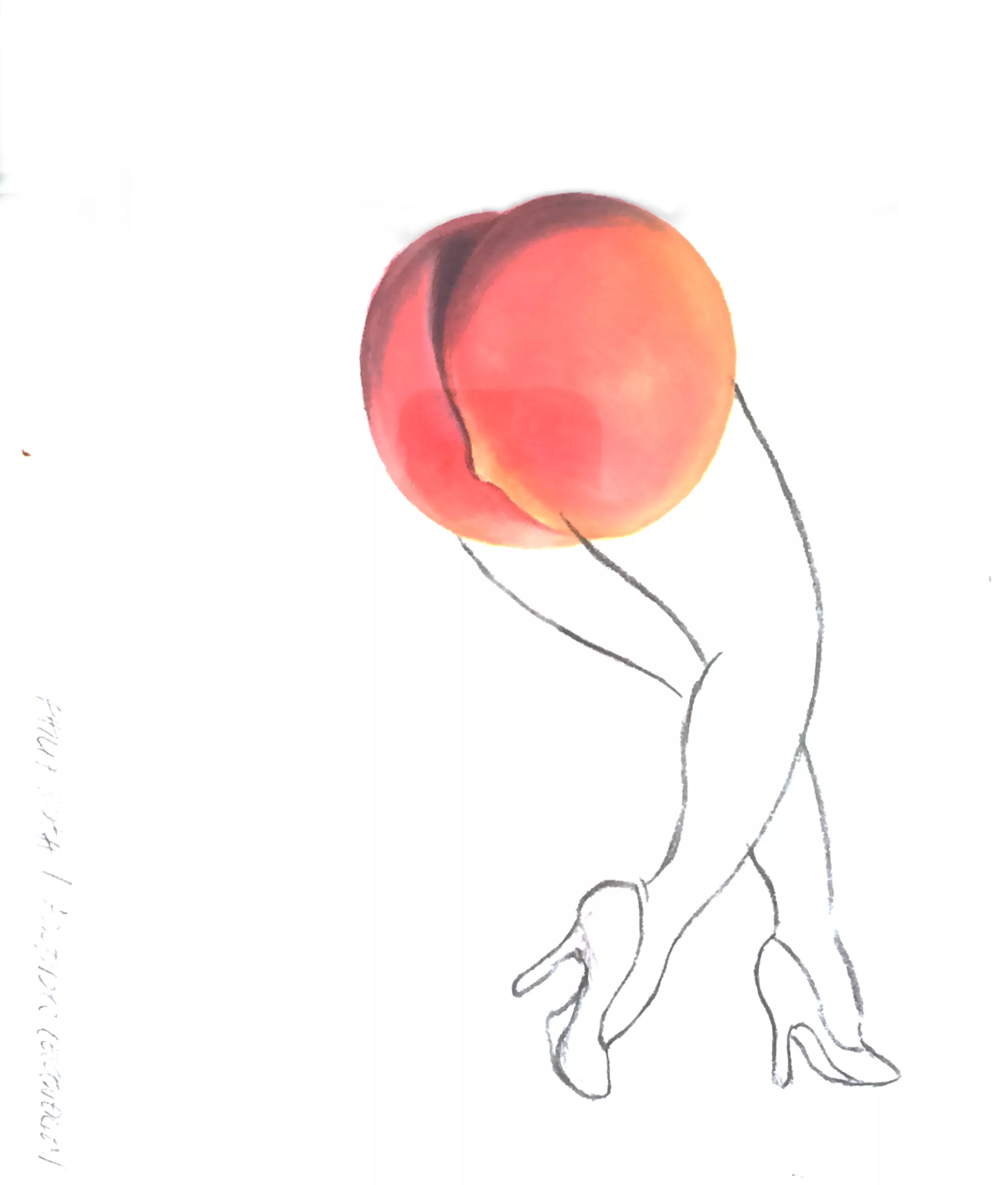
Itching powder
Cartoons can cancel the distance between the observer and a person’s reputation or function. A reversal of roles takes place during the process of observation and identification by the observer: through the critical glance posed by this last one on the crunched person, the authorities and the criticized conditions are questioned. Peter Gut is one of the cartoonists who master this art of deconsideration to perfection. In doing so, he is not content to ridicule the target of his mockery by exaggerating the physiognomy. He has much more the talent to create original images and surprising situations that cast a new and often unflattering light on the character traits, intentions or actions of caricatured people. Many of his works present absurd and grotesque moments which require from us a certain capacity of association and combination. Often Gut goes even further, detaches himself from the current concrete event to find a universal and timeless essence. More free, these works marked by a humor on several levels lend themselves particularly to reveal Peter Gut’s talent as a draftsman who explores better than others the possibilities offered by caricature. And who sees in the political drawing a playground where everything intertwines and where the most twisted humorous point is erected. Thus, Gut uses here not only his fine jokes, but also his qualities as an experienced draftsman armed with a great repertoire of figurative styles and means.

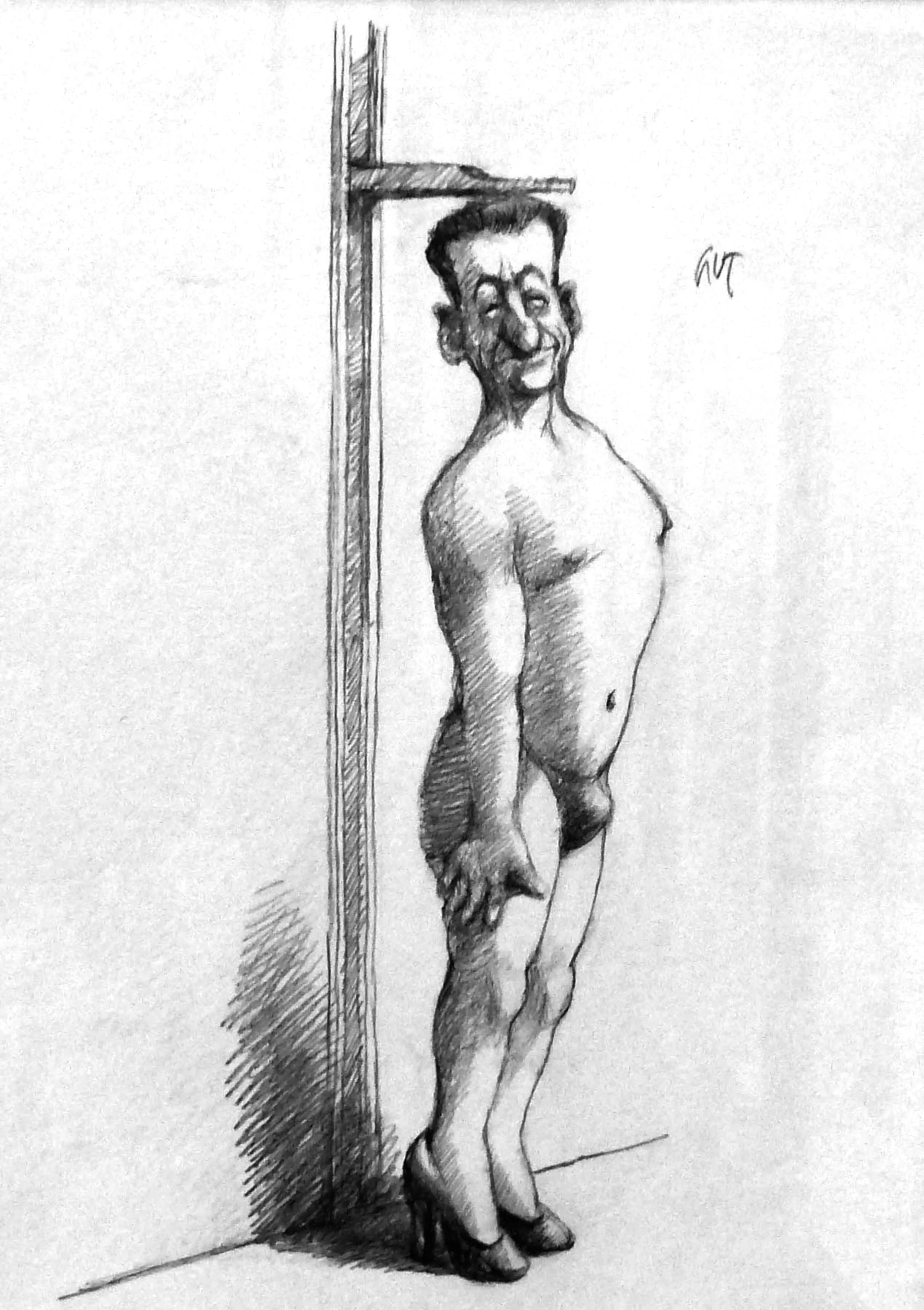




To go further:
- An article containing a series of press cartoons
- Find his exhibition during the Delmont BD festival from 2 to 5 July 2015.
- Buy his pictures as postcards!
Sources: The images in this article are presented for educational purposes.
